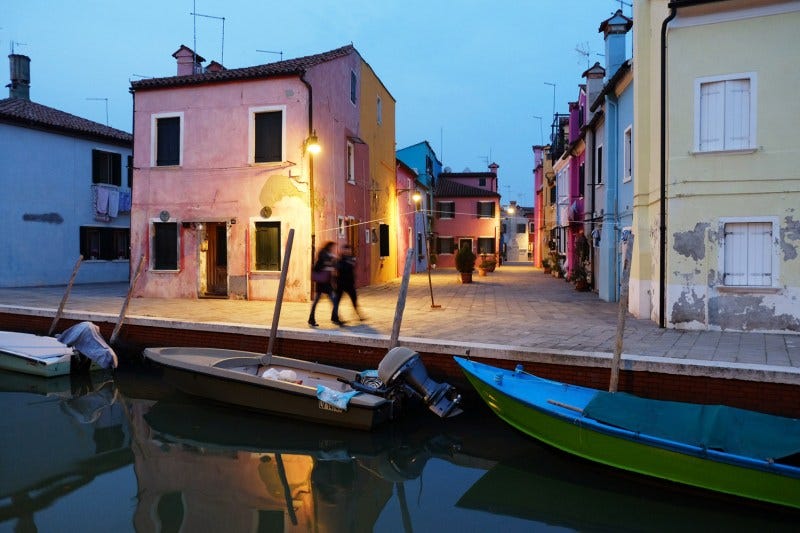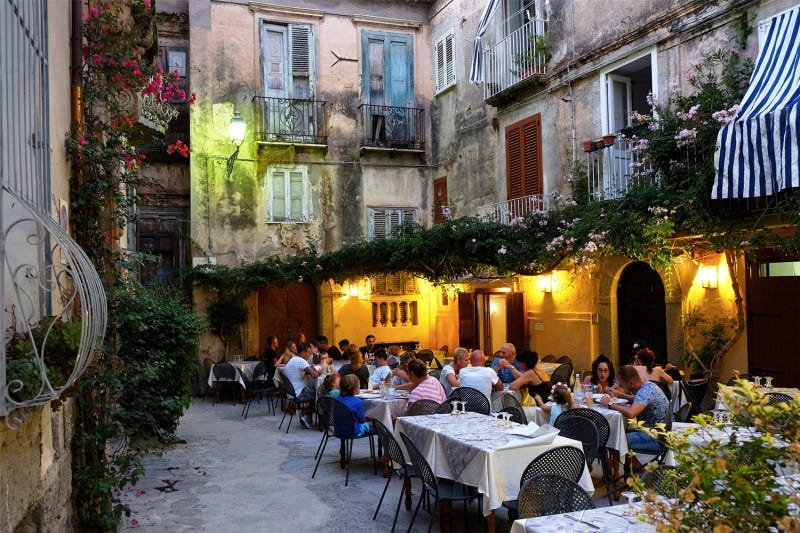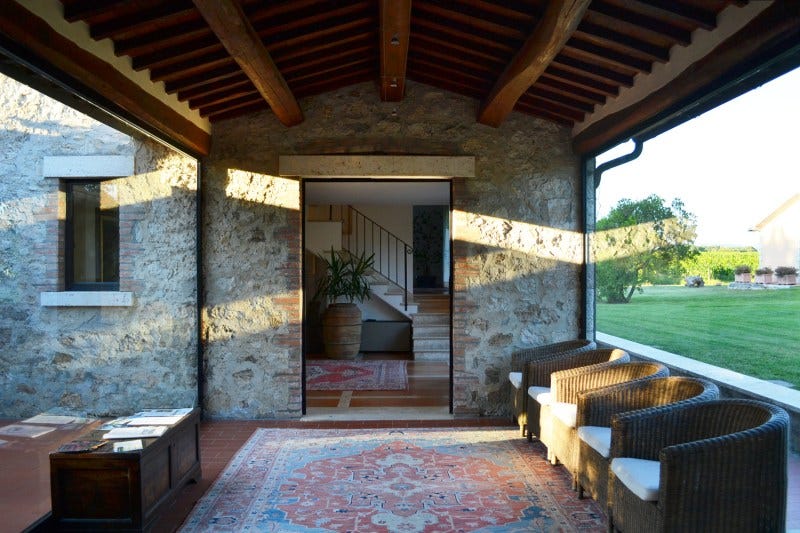How to Travel Better In Italy
One of my closest friends and most trusted Italy experts Livia Hengel joins us to talk about how to be a better traveler in Italy. Enjoy and buon viaggio!
Be a Better Traveler In Italy
So much has already been said about Italy, it can be daunting for a travel writer to hope to add fresh insight to the conversation. As the former home of one of the world’s most glorious and furthest-reaching empires and a cultural bastion for millennia, Italy has enjoyed a long history in the public’s psyche and attracts over 50 million visitors a year, making it the 5th most visited country in the world. It remains one of the most culturally influential countries with an impact that touches on practically everything we see, do, and eat in the world today, from art and architecture to food, design, urban infrastructure, language, religion, music, medicine, social norms, and more. And beyond its historic and artistic draws, the country’s natural beauty and relaxed lifestyle make it a favorite place for leisure travelers year-round. Everyone seems to love Italy and that makes it a privilege to live here, as well as a responsibility.
Like elsewhere in the world, tourism is a double-edged sword and has mixed repercussions for Italy. On the one hand, tourism provides necessary and welcome employment opportunities that help offset the country’s stagnant economy – from managing bed & breakfasts and running experiences, providing transportation services, and working in restaurants, so many Italians are gainfully employed thanks to Italy’s relentless tourism. According to the World Travel & Tourism Council, the travel and tourism industry generated nearly 1.5 million jobs in Italy in 2017 (about 6.5% of total employment), helping to create jobs for countless women and young people that face a disadvantage in the current economic climate.
On the other hand, tourism in Italy is largely concentrated in a handful of cities that are collapsing under the weight of their own success. We hear almost daily about protests against cruise ships in the Venice Lagoon, limiting access to the villages of Cinque Terre, regulating the arrival of tourists in Capri, hosing down church steps in Florence so tourists can’t eat and litter in the city’s piazzas, and charging admission to heritage sites in Rome.

Tourist destinations earn their reputation for good reason, but despite Italy’s fame and popularity, much of the country remains refreshingly unknown and under the radar. Every country is infinite, especially a country as dense and historic as Italy, and il Bel Paese is seemingly boundless. Much of the Italy’s strength lies in its reverence for tradition and its ample regional diversity, with hundreds of hidden jewels that go largely undiscovered. As a seasoned traveler who has grown weary of so much sameness across global destinations, I have been delighted so find endless stimulation within the confines of one country. Each trip seems to lead me down a new rabbit hole, spurring me deeper beneath the surface and closer to the beating heart of the country – one that persists in spite of globalization, mass tourism and trends.

And so, instead of traveling widely, I have spent the past eight years concentrated on traveling deeply in an effort to honor Italy and its vast culture, and to help shed light on the nuances that make the country so unique, cherished, and influential in the world. I’ve also spent several years considering how travel in Italy can be more sustainable and fruitful for everyone involved. From visiting in the off-season and exploring a region to supporting local business, there are so many ways to enjoy a more authentic travel experience while helping to protect Italy’s most vulnerable destinations – and supporting lesser-known territories that would benefit from increased exposure: a win-win situation for you and the country.

This is my advice for visitors:
Six Ways To Travel Better In Italy
Travel Slowly: Italy is a country, like all others, that is impossible to visit thoroughly in one trip (or one lifetime). A whirlwind vacation through its highlights is physically possible, but travelers will miss all the cultural nuance and treasures that make Italy such a rewarding place to visit. Focusing on one or two cities and giving yourself time to visit nearby towns and villages is a much more rewarding and relaxing experience than spending 24 hours per location, amounting to a full camera roll but very few real memories of a place. This also gives travelers time to visit less famous sites that may be equally noteworthy but less hyped.
Go In The Off-Season: Every city and region in Italy has a low season and a shoulder season, usually October to March, while major metropolises vacate in August when locals head to the beach. Rome maintains its temperate climate in the late fall and gives visitors some of the year’s best sunsets; Capri is fresh and cool in the late spring, making it the perfect place for nature hikes and touring the island before the arrival of the summer heat; the crowds have significantly decreased in Cinque Terre by the beginning of September, though the water will stay warm enough to swim all month. When you visit in the low-season, you help put less strain on the cities, enjoy lower prices, and can take in a more relaxed atmosphere, immersing yourself more fully in the local context.

Explore A Region: Italy was only unified 150-years ago, so regional identity is strong and extremely fascinating to explore. Consider sticking to a region and visiting multiple cities within it to experience its subtle differences through local dishes, regional dialects, or village festivals. One of my favorite territories to explore is Campania, which offers highlights such as Naples and Pompeii, but also lesser-known destinations like Procida and Ischia – both short ferry rides away. With 20 diverse regions, there is a lot to experience and options for every type of traveler – foodie, nature enthusiast, culture buff, or beach bum.
Support Local Businesses: Italy is replete with local artisans, slow food restaurants, heritage properties, and more. I love the longstanding tradition of farm stays and sleeping in a rustic agriturismo – many have even started to go luxe in recent years if that’s your scene. Staying in this kind of property not only gives you that quintessential Italian experience so many people crave, it also helps give to the local community. These properties are often inherited by family and tourism helps sustain their maintenance and restoration.

Be Curious: Italians are warm, hospitable people who love to practice their English, so don’t be afraid to ask questions, seek local advice, or strike up a conversation. The best way to peel back the layers of a place is by learning about it through locals, many of whom adhere to strict cultural traditions. Ask about their favorite place to eat (not “What is the best place to eat in the city?” but “Where do YOU eat in the city?” – the answer will vary), their local beach, where they get coffee, et cetera, and you’ll be surprised these usually aren’t listed in the top 10 lists you’ve been scouring online.

Stay Open-Minded: There are many cultural norms and inconveniences that travelers will face when traveling in Italy, from stringent food rules and Sunday closures to a cash economy and frequent strikes. Many cultural sites are closed on Sundays and trains are reduced, so why not enjoy a leisurely Sunday lunch at a local trattoria? Most trattorias don’t stir up a cocktail at dinner, so why not ask for a local wine to pair with your dish to bring out the flavors the way they were meant to be enjoyed? Although some rules and traditions may seem inconvenient at first, taking a cue from the locals will help root you in Italy’s heritage and give you a more authentic experience in the country.
Links I Love
Utah Wanted All the Tourists. Then It Got Them.
How Italy Blends Culture With Cuisine: A Photo Essay
A Conflict Photographer Reflects On His Time In Iraq (I met Cengiz Yar while living in Erbil and was/am in awe of his photography and modesty. This piece on creating home in the midst of photographing a war zone is a nice read).
Yes, southerners–Chicago barbecue is a thing! Hear more about it here. Saveur also covered it a couple of years ago.
The Thrillist Fast Food Awards. Love seeing Culver’s get the recognition it deserves.
How to Drink More Sustainably (Second story in this link).
This newsletter, like Austin Kleon’s and the Austin Chronicle, is free but not cheap. If you want to help support me/it, you can forward it to a friend, share on social media, or follow me here.
I tweeted a thread of some of my favorite newsletters. What are yours? Come join the conversation.
Recommendations
Eat: The fried eggplant and Vietnamese ravioli at Indochine (recently opened in Dubai, and in NYC for 35 years).
Drink: Mt. Etna wines! Livia brought some over and I almost cried of happiness after months of the Duty Free selection. Life is tough, I know.
Read: The Forever War. Published in 2008, but still timely (and the writing is so good!)





